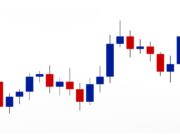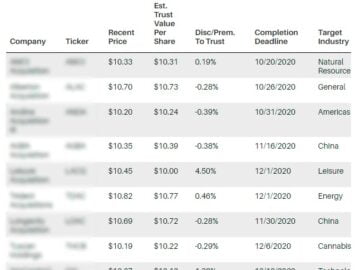Seeking out great stocks to buy is essential, but many would say it’s even more important to know which stocks to steer clear of. A losing stock can eat away at your precious long-term returns. So, figuring out which stocks to trim or get rid of is essential for proper portfolio maintenance.
Even the best gardens need pruning, and our team has spotted a few stocks that seem like prime candidates for selling or avoiding. Continue reading to find out which three stocks our team is staying away from this week.
Food delivery leader and pandemic darling DoorDash (DASH) was one of the big winners in the shift to stay-at-home culture. Between 2019 and 2021, DASH revenue increased by 451%, from $885 million to $4.88 billion. But now that the economic reopening is complete, DoorDash’s revenue increases are grinding to a halt. Between the third and fourth quarters of 2021, it experienced growth of just 1.9%.
DASH’s revenue came in at $1.30 billion for the fourth quarter of 2021, up 34% year-over-year. However, its total costs and expenses were up 14% year-over-year at $1.45 billion. Total current liabilities were $1.76 billion for 2021, compared to $1.4 billion for 2020.
The company is expecting $48 to $50 billion in gross order volume in 2022, implying a modest 14% increase from $41.9 billion last year. However, that’s not enough to justify DASH’s lofty valuation. Currently, the stock trades at a price-to-sales multiple of 7.4, expensive compared to top competitors like Uber Technologies (UBER), which trades at a price-to-sales multiple of 3.6 – half that of DASH.
DASH’s EPS is estimated to remain negative in 2022 and 2023. Its EPS is estimated to fall 20.6% for the first quarter. It’s Important to note that the company missed EPS estimates in each of the trailing four quarters. The stock has declined 37% over the past year to close Friday’s session at $128.55.
After reporting mixed Q4 earnings and issuing lower than forecast 2022 guidance last week, Roku shares plunged more than 22%. With Roku’s price nearly 80% off its July ATH, eager investors may see a buying opportunity here. Considering the obstacles that the not-yet-profitable company is up against, we beg to differ.
The supply chain disruptions that hampered growth in the U.S. television market in 2021 will likely persist well into 2022. “Overall TV unit sales are likely to remain below pre-Covid levels, which could affect our active account growth,” Anthony Wood, Roku’s founder, and CEO wrote in the company’s letter to shareholders. “On the monetization side, delayed ad spend in verticals most impacted by supply/demand imbalances may continue into 2022.”
Roku ended the third quarter with 56.4 million active user accounts, up 1.3 million from the prior quarter. However, analysts had expected 1.68 million new user accounts.
Roku said it sees revenue of $720 million for the first quarter, which implies 25% growth. Analysts were projecting revenue of $748.5 million for the period. Pivotal Research was one of several firms to decrease its rating on Roku recently. Analyst Jeffrey Wlodarczak downgraded the stock from Hold to Sell and slashed its price target to $95 from $350.
“The bottom line is with increasing competition, a potential significantly weakening global economy, a market that is NOT rewarding non-profitable tech names with long pathways to profitability and our new target price, we are reducing our rating on ROKU from HOLD to SELL,” the analyst wrote in a note to clients.
Things have gone from bad to worse for American Airlines (AAL) over the past few weeks as chaos in the energy market has escalated. Rocketing fuel prices threaten to take the wind out of American’s sails before it’s had a chance to recover from omicron and Boeing’s February misstep.
As air travel struggled to recover from the omicron variant, AAL took a huge hit last month after Boeing delays forced suspension of routes, including those between Seattle and London, Los Angeles and Sydney, and Dallas and Santiago, Chile. Persisting snags in the delivery of Boeing’s new 787 Dreamliners are also expected to delay service launches between Dallas and Tel Aviv and reduce frequencies between Miami and Sao Paulo, Brazil. All in all, the company is expecting disruptions caused by the Boeing snafu to affect travel routes directly and indirectly for some time and for the recovery to be gradual.
Considering AAL’s already sensitive financial position, higher costs and lower capacity threaten to further deflate the stock as international, and business travel stagnate amid geopolitical tensions. Redburn analyst James Goodall now expects all the network airlines will see negative free cash flow and rising net debt this year. If there is a bright spot in the airlines right now, American is not it.
The current recommendation among 24 analysts is to Hold AAL. A median price target of $18 represents a 5% increase from Friday’s closing price.









